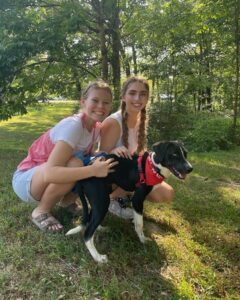Community Outreach & Education
We envision a future where animal shelters are viewed as a community resource and are supported as such. Successful shelters work to help their community see them as belonging to the entire community. They set hours to make it easy for the public to be a part of the shelter’s work, engaging them as volunteers, and offering assistance with training issues, financial struggles, and any problems that could lead to an owner-surrendered animal.
Find ways to invite the public into your building for positive reasons and if you can’t get the public to come in, go to them.
Actively Recruit Volunteers
 A strong volunteer program is critical to the success of any shelter. Many volunteers want to help walk dogs, or play with pups and kittens. Have a list ready for age-appropriate and skill-appropriate tasks for anyone who wants to volunteer, where the volunteer feels appreciated and the shelter gets its needs met. Some examples:
A strong volunteer program is critical to the success of any shelter. Many volunteers want to help walk dogs, or play with pups and kittens. Have a list ready for age-appropriate and skill-appropriate tasks for anyone who wants to volunteer, where the volunteer feels appreciated and the shelter gets its needs met. Some examples:
- Youngsters can put the food enrichment items together. (The dogs don’t care if it doesn’t look pretty.)
- Senior citizens can sit in an office and help socialize pups and kittens with just their presence (and not being knocked down.)
Refer to WWLDO’s Volunteer Programs and Practices for more information.
Ask for Help From Girls on the Run
Girls on the Run is a wonderful nonprofit that inspires girls to be leaders and to follow their dreams. Members are inspired to get involved in their communities and make a difference. Find out if there’s a local chapter near your shelter and then reach out to let them know how they can partner with the shelter to help homeless animals.
Back to School Giveaway
For shelters that run thrift shops a Back-to-School Giveaway is a great way to serve the community while making room for new stock in the shop.
Become a Pets for Patriot Partner
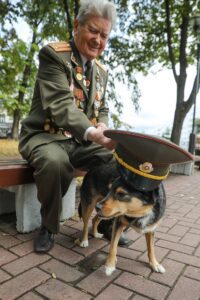 The Pets for Patriots program is a non-profit that works with shelter partners to match hard-to-place pets with veterans. The program offers ongoing support to veterans to help set them up for success once the adoption is completed. Shelter partners offer special “thank you for your service” discounts to Pets for Patriots veterans. Some of those benefits include waiving or reducing the adoption fee, providing some of the basics pet care needs such as dishes and leashes, and offering vouchers for low or no-cost training or to purchase supplies at local pet stores. Shelters can apply online to become Pets for Patriots members.
The Pets for Patriots program is a non-profit that works with shelter partners to match hard-to-place pets with veterans. The program offers ongoing support to veterans to help set them up for success once the adoption is completed. Shelter partners offer special “thank you for your service” discounts to Pets for Patriots veterans. Some of those benefits include waiving or reducing the adoption fee, providing some of the basics pet care needs such as dishes and leashes, and offering vouchers for low or no-cost training or to purchase supplies at local pet stores. Shelters can apply online to become Pets for Patriots members.
Build Walking Trails or a Dog Park
If the shelter property has space adding walking trails or a dog park can be a wonderful way to attract visitors to the shelter. The shelter could invite the community to bring their dogs to puppy socialization or basic training and agility classes in the dog park. Anderson County P.A.W.S., SC, built a large paw-shaped dog park equipped with an amphitheater, and play areas, with plans to organize fun activities with dogs. Members of the public are also invited to take shelter dogs out for fun playdates in the park.

Cheatham County Animal Control overhauled its hiking trails by painting rocks and adding storyboards along the trails. Members of the public can use the trails for free as long as they take a shelter dog along for a walk. It’s been a huge success with members of the community coming to the shelter to walk the dogs three or four times a day. This is making a huge difference to the health and well-being of the dogs.
Cat Cafes Can Help the Shelter
Look for cat cafes in your local community. Because animal lovers frequent these facilities, they can help the shelter in its mission to save lives. Reach out and see if the cafe would be open to running seasonal fundraisers to benefit the shelter. Ask if they would highlight adoptable pets on the cafe’s social media pages, and request permission to leave a donation jar on the cafe’s checkout counter. This is also good for business as patrons will like that the cafe helps homeless animals.
Contact Local Scout Leaders
 Contact your local troop leaders and list your shelter as a place to earn service badges or potential Eagle scout projects. Have a ready list of how these groups can help your shelter like setting up a Free Little Library, collecting donations, building cat perches or Kuranda beds. Invite potential Eagle Scouts to take on a project for the shelter – building a story walk, a cattery, a garden, or other larger project. Young children can also get involved. For example, a local Cub Scout Troop made enrichment toys for the dogs and cats at the Onslow County Animal Shelter, NC.
Contact your local troop leaders and list your shelter as a place to earn service badges or potential Eagle scout projects. Have a ready list of how these groups can help your shelter like setting up a Free Little Library, collecting donations, building cat perches or Kuranda beds. Invite potential Eagle Scouts to take on a project for the shelter – building a story walk, a cattery, a garden, or other larger project. Young children can also get involved. For example, a local Cub Scout Troop made enrichment toys for the dogs and cats at the Onslow County Animal Shelter, NC.
Chambers of Commerce Make Great Partners
Your local Chamber of Commerce can help support the shelter’s mission by encouraging sponsorship and participation from businesses in raising funds or holding events. It can also encourage residents to adopt homeless animals while providing information on volunteer opportunities at the local shelter. Some Chambers of Commerce also sponsor fundraising events to benefit local animal shelters. For example, the Franklin County Chamber of Commerce is holding a second annual Rudolph Run in December to benefit the Animal Harbor Shelter.
Connect With a High School Photography Club
Invite members of the local high school photography club to your shelter to practice their skills. Who wouldn’t want to take pictures of the adorable dogs? Ask the students to share their pictures with you. Give them a tour or a short overview of your shelter. You can also ask if any of the students would like to volunteer to photograph dogs for posting on Petfinder and social media or for fundraiser photo shoots.
Create an E-mail List and Make it Easy to Join
According to experts at Maddie’s Fund, while social media is an easy way to stay connected with your followers, email actually offers a more powerful and direct way to reach out to your community of supporters. The simple act of sharing their email address creates a bond of trust between the shelter and the supporter and gives you a more direct line of communication. Additionally, according to the nonprofit foundation, the return on investment of email marketing is four times higher than snail mail, and three times higher than social media. In fact, the chance someone will click an email link is six times higher than the chance they’ll click a link in a Tweet. So, it’s worth creating an email list and making it easy for supporters to join. Here’s a great example from Animal Harbor Shelter, TN.
Creative Calendar Makes Attending Events Easier
Posting a creative calendar on social media that clearly lays out the dates and times of upcoming shelter events helps people to easily see what’s coming up and if they are free to attend. The Onslow County Shelter, NC posted a lovely artsy calendar packed full of its events during the busy month of December. This also shows supporters all the hard work being done at the shelter and encourages more donations and support.
Expand Shelter Hours
The more flexible a shelter’s hours of operation the more people can visit and potentially adopt dogs. Expanding the hours to include evenings and weekends will make it easier for the public to visit and become engaged in their local shelter. One key change to getting more volunteers and more adoptions at the Harrison County Flora Shropshire Animal Shelter, KY was expanding weekend hours. Now the shelter is closed on Tuesdays, but open to the public on the other weekdays from 10-4 and on Saturday and Sunday from 10-2. The Onslow County Animal Shelter, NC invited members of the public to an evening Pawjama Pawty and a “Who’s Your Boo?” evening Halloween adoption and community event. The Caldwell County Animal Shelter, KY goes the extra mile to find homes for animals by making arrangements to meet potential adopters after hours. Don’t be discouraged if you don’t see an increase in visitors and adoptions straight away. Over time, though, the expanded hours will start to pay off.
Find Creative Ways to Celebrate Anniversaries
 Inviting the local community to celebrate shelter anniversaries is a great way to gain support for shelter animals. Many shelters do this by waiving or reducing adoption fees for a set amount of time in honor of a particular milestone. The Animal Harbor shelter, TN celebrated its 20th Anniversary by delivering 20 animal-welfare-related books to a local middle school. In addition to giving back to the community, the shelter hopes to influence local youth to be good stewards of animals. The shelter also published a 20th-anniversary informative graphic on its website’s Home Page, providing a quick look at major milestones.
Inviting the local community to celebrate shelter anniversaries is a great way to gain support for shelter animals. Many shelters do this by waiving or reducing adoption fees for a set amount of time in honor of a particular milestone. The Animal Harbor shelter, TN celebrated its 20th Anniversary by delivering 20 animal-welfare-related books to a local middle school. In addition to giving back to the community, the shelter hopes to influence local youth to be good stewards of animals. The shelter also published a 20th-anniversary informative graphic on its website’s Home Page, providing a quick look at major milestones.
Future Farmers of America Chapters Make Great Shelter Friends
There are chapters of the Future Farmers of America (FFA) throughout the country and a big focus of these chapters is to encourage young members to give back to their communities throughout the year. Depending on locations projects can include anything from road and beach cleanup to lending a helping hand at local animal shelters. Recently a team of FFA members rolled up their sleeves and took on numerous jobs at the Caldwell Animal Shelter, KY.
Get Educated About the Local Pet Community
Spaying and neutering are the best ways to prevent pet overpopulation and relieve the pressure on overcrowded shelters and rescues. Education plays a big role in getting this done. A great first step is to understand why local pet owners don’t want to have their pets fixed. One great way of doing this is to post a Q&A on social media to get honest feedback from the public. Any myths surrounding spaying and neutering can be addressed in follow-up posts.
Get Help From Local Veterinarians

Reach out to local veterinarians to see if they would ask clients to donate boxes of flea and tick preventatives to benefit shelter animals.Pet owners understand the importance of preventatives for their own companions and this makes it easy for them to contribute to the health of homeless animals. The hospitals can then hold the supplies for the shelter to pick up.
Grab Attention by Sending Out Holiday-Themed Emails
Sending out e-mail blasts wishing supporters well on holidays or for special observances such as July 4 is a great way to grab attention. Be sure to thank the e-mail recipient for his/her support in saving lives. Including a bulleted list of how supporters can continue to make a difference for homeless animals is a great call to action.
Greet Visitors at the Front Door
A volunteer who is friendly and outgoing and understands the rules and regulations of the shelter as well as the adoption process will make a great front door greeter. The greeter’s job is to welcome visitors with a warm smile and answer any questions they may have. An ideal shelter greeter will be:
• Courteous and respectful
• Knowledgeable about shelter programs
• Won’t discriminate or pass personal judgments on visitors
• Be willing to assist visitors in completing applications
• Be able to provide direction and guidance for visitors interested in meeting animals
Recruiting a team of volunteer greeters who can cover different days and shifts will help ensure that there’s always a friendly face to greet visitors.
Help Influence Tomorrow’s Leaders
The mission of the National Beta Club is to prepare students to become tomorrow’s leaders. Members of the club develop leadership skills by participating in volunteer activities in their local communities. Inviting Beta Club members to lend a helping hand at the shelter is a great way to enlist young leaders who will serve as ambassadors for homeless animals.
Hold a Walk a Shelter Dog Day
Advertise a day when people can visit your shelter and walk dogs. Make it a regular event and people will enjoy showing up and spending time with the dogs. Even if some people only have 15 minutes to spare, a 15-minute walk is better than no walk. Promote the event by posting photos of people hanging out with the shelter dogs on social media. Invite local cafes or delis to donate food for volunteers during the event. This is a fun way to thank the volunteers and provides great PR for the local businesses.
Honor Community Veterans
 Across the US military veterans are experiencing the benefits of sharing their lives with animal companions. Many of these companions are rescue pets. In honor of Veterans Day (November 11), the Shenandoah Valley Animal Services, VA waives adoption fees for those who have served. This is a wonderful way of saying thank you to veterans while finding a loving home for a pet in need.
Across the US military veterans are experiencing the benefits of sharing their lives with animal companions. Many of these companions are rescue pets. In honor of Veterans Day (November 11), the Shenandoah Valley Animal Services, VA waives adoption fees for those who have served. This is a wonderful way of saying thank you to veterans while finding a loving home for a pet in need.
Host Children’s Programs

Offering a free children’s program (or any-age program) in the community at a library, church, rec center, or other gathering place, is a way for a shelter to give back. Maddie’s Fund offers Maddie’s Tail Wag, a collection of activities and coloring pages for kids in two different age categories: 6 and under and kids 7 through 10. While youngsters work on basics like shapes, colors, and numbers, Maddie and her cartoon friends help teach empathy and the benefits of animal companionship.
The books are available in English and Spanish and are free for animal welfare organizations and shelters. These booklets make a great addition to any humane education program. Hosting this program at the shelter provides an opportunity to show the public what is happening in the shelter, introduce them to adoptable dogs, and change the narrative. You can access WWLDO’s complete Kids 4 Paws program here.
Host a Pet Wellness and Awareness Day
A Pet Wellness and Awareness Day is a wonderful opportunity to serve the pet-owning community. Invite local pet businesses to set up booths at the event. Offer free or reduced vaccines and microchips and distribute free pet food to those in need. Partner with a local groomer to conduct workshops on nail-trimming and a trainer to offer introduction to agility or basic training classes. Invite the local radio station and other businesses to sponsor the event and/or join you to host. Be sure to promote the event on social media a few weeks in advance and ask followers to like and share.
Host a Picnic With Pooches Event
 Invite the community and their well-behaved dogs to enjoy a Picnic with Pooches on the grounds of the shelter. The event can feature food, vendors, and dog obedience and agility demonstrations. Enlist volunteers to bring shelter dogs to the picnic and to help educate the public about shelter programs and how they can help homeless animals. Consider hosting a silent auction during the picnic as a way to raise funds and ask guests to bring donations of pet food and supplies for the shelter animals.
Invite the community and their well-behaved dogs to enjoy a Picnic with Pooches on the grounds of the shelter. The event can feature food, vendors, and dog obedience and agility demonstrations. Enlist volunteers to bring shelter dogs to the picnic and to help educate the public about shelter programs and how they can help homeless animals. Consider hosting a silent auction during the picnic as a way to raise funds and ask guests to bring donations of pet food and supplies for the shelter animals.
Introduce Staff and Volunteers to the Community
Social media offers a wonderful opportunity to introduce shelter staff, volunteers, and board members to supporters. A great way to do this is to post a collage of shelter staff and volunteers with their dogs. This can be followed with individual posts of each member and what inspired him/her to get involved with the shelter. It’s a great way to showcase the dedication of the shelter team and inspire others to get involved.
Invite Local Business to Help Celebrate Adopters
Thanking and celebrating people who choose adoption over shopping for their new best friend is so important. Local businesses can help do this while also creating good PR for their companies within the local community. For example, at the Onslow County Animal Services shelter, NC staff from the Coffee Co. set up a table at the shelter and gave out free coffees to anyone who adopted a pet. Local bakeries, pet stores, gift shops could also give out goodie bags to celebrate those who open their hearts and homes to shelter dogs.
Join in Fall Fun
Many communities hold fall or harvest festivals featuring music and games. Halloween is the perfect time to host costume parades and award prizes for the best dressed to children and pets. These are great family events and offer wonderful opportunities for the shelter to set up an information table and bring along some dogs for adoption. Maybe some of the shelter dogs could even join in the costume parades.
to host costume parades and award prizes for the best dressed to children and pets. These are great family events and offer wonderful opportunities for the shelter to set up an information table and bring along some dogs for adoption. Maybe some of the shelter dogs could even join in the costume parades.
Join in Local Marathons
Taking shelter dogs out for a run is a great way to help them burn off pent-up energy while getting a break from the shelter environment. Shelters can reach out to the local high school coach to enquire about creating a partnership between the school’s running teams and shelter dogs. In California, the annual Fun Run with Lodi Animal Services features cross-country runners from Tokay High School and dogs from the local shelter. The fun run features a 5K out-and-back course in a local park. The larger shelter dogs complete the full 3.1 miles, while the smaller dogs walk the perimeter of the park. Before the run, the high school boys’ and girls’ cross-country teams visit the shelter to meet the dogs and practice running with them. By the end of the 5K, many runners have formed strong bonds with their four-legged partners. Some end up adopting the dogs or the dogs are adopted by members of the public who met them before or after the marathon.
List Low-Cost Spay/Neuter Options
Shelters typically only offer low-cost spay/neuter services for shelter pets but can provide a valuable service by educating the public on where to access reduced veterinary services. For example, posting a list of veterinary clinics or organizations offering reduced-fee spay/neuter services in the community will help pet parents while also tackling the pet overpopulation problem. Please refer to WWLDO’s list of low-cost spay/neuter and veterinary services in the General Resources & Programs section of the guide.
Make Connections at The Local Thrift Store
If your shelter isn’t lucky enough to have a dedicated thrift shop, but there is a charity shop in the community reach out and make a connection. Many thrift shops sponsor several local nonprofits and may be happy to add homeless animals to their list. Be sure to ask if the shop gets donations of blankets or towels that aren’t suitable for sale in the shop but could be put to great use at the shelter.
Make the Shelter Easy to Find
Animal shelters are often hidden behind municipal buildings and are out of sight out of mind. Posting bright colorful shelter signs around the neighborhood will remind people that animals need homes. Be sure the signs include the address and visiting hours.
Make the Shelter Inviting
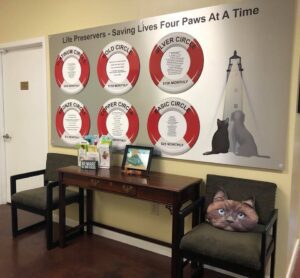
The shelter needs to be a welcoming place to encourage people to visit meet the animals and participate in activities. Consider painting bright murals in the lobby. Make sure visitors are greeted and welcomed by happy friendly staff members or volunteers. It also helps to have a friendly dog greeter at the entrance. Beautifying the exterior of the shelter is also a wonderful way to make the shelter more inviting for visitors. Students from a local technical school volunteered to do landscaping work at the Northumberland County Animal Shelter, VA. Their teacher, who is an advocate of the shelter, led the initiative. Partnering with schools is a great way to find young volunteers eager to engage in community service projects.
Moore County Program Teaches Young Students About Responsible Pet Care
The Mission of the Moore County Citizens’ Pet Responsibility Committee (PRC) in North Carolina is to support the Moore County Commissioners in addressing the pet overpopulation crisis in Moore County.
Launched in 2008 the PRC pilot program aimed to educate over 1,000 fourth grade students in Moore County each year about pet responsibility. Today, this program is an integral part of the curriculum, reaching more than 1,200 students annually across all public schools in Moore County, as well as five major private and charter schools.
The PRC Pet Responsibility Program is presented as an integral part of Moore County Schools’ Character Education Program focusing on the values of good judgment, integrity, kindness, perseverance, respect and responsibility. Each year, volunteers present the program to fourth graders once a week over a six-week period, working closely with Moore County Animal Services Deputies to enhance educational efforts.
A highlight of the program is the involvement of accredited therapy dogs and their handlers, who help celebrate the joy of a well-trained, well-cared for and loved dogs. These therapy dog teams also support the Reading Tails Program, which assists elementary school students in improving their reading skills.
PRC is a nonprofit organization and is happy to share lesson plans with others interested in starting a similar program in their communities. For more information, please contact Angela North Zumwalt at (910) 949-9953 or via email at angelazumwalt@earthlink.net.
Offer a Blessing of the Animals for Community Pets
 Saint Francis of Assisi Day is October 4 but many shelters and churches host a Blessing of the Animals throughout the month of October. Hosting a Blessing is a great way for shelters to connect with the community while honoring animals. For example, in honor of St. Francis the Petersburg Animal Shelter, VA partnered with a local hospice center to host a Blessing of the Animals. Participants were asked to bring donations for shelter animals to the blessing.
Saint Francis of Assisi Day is October 4 but many shelters and churches host a Blessing of the Animals throughout the month of October. Hosting a Blessing is a great way for shelters to connect with the community while honoring animals. For example, in honor of St. Francis the Petersburg Animal Shelter, VA partnered with a local hospice center to host a Blessing of the Animals. Participants were asked to bring donations for shelter animals to the blessing.
Offer Pack Walks
Invite members of the public to take shelter dogs on group walks in the local park. Some shelters allow visitors to transport dogs in their own vehicles while others take the dogs in shelter vans and meet the volunteers in the park. These walks can be held on a regular basis and promoted on social media with catchy titles such as A Walk in the Park with Shelter Dogs or Sundays in the Park with Shelter Dogs. Be sure to assign a knowledgeable group leader to teach safety rules and monitor the walks. These outings give the dogs a welcome break from the shelter while offering wonderful exposure to potential adopters. Changing the location of weekly or monthly pack walks is a great way to engage more and/or new volunteers. Walking in different locations also offers greater exposure for the dogs.
Organize a Paws in the Park Event
Pet parents love any opportunity to enjoy community events along with their pets. Highlights of an annual Paws in the Park hosted by the Humane Society of Blue Ridge, GA include a pet parade, costume contests, and photo shoots. The Fanning County Animal Control Shelter participates by setting up a table educating the public about the role the shelter plays in saving lives. It also provides a great opportunity to introduce shelter dogs to potential adopters.
Organize School Visits
Contact local school principals and offer to bring a shelter pup or two to an assembly. Provide the principal with your contact information, shelter history, and what you plan to share with the students. Your presentation can help educate students about the important work that takes place at the shelter. Discuss how rescue dogs make wonderful loving companions and that many work as comfort dogs, service dogs, and police dogs. Talk about the importance of spaying/neutering and the commitment involved in caring for an animal companion. Come prepared with your shelter wish list in case anyone asks. Invite adults and families to visit or volunteer at the shelter. If you can’t spare shelter staff to conduct these presentations ask a volunteer or two to represent the shelter.
Participate in Career Day
Career Days are held in elementary, middle, and high schools and offer a wonderful opportunity to teach students about careers helping animals. Taking along a shelter dog or an adopted dog is a great way to teach children about safety around dogs and the importance of adopting shelter animals.
Participate in Parades
If your town holds a parade of any kind, enter the shelter! It can be as simple as creating a banner (they are relatively inexpensive on Vistaprint) and walking dogs on leashes. Or you can engage volunteers and staff to build a float or decorate an Animal Control officer’s vehicle. Hand out information about the shelter and/or Animal care flyers.
Partner with Home Depot
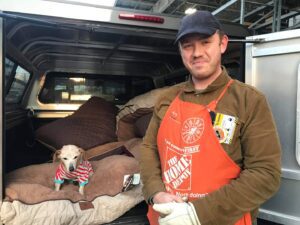 Employees and customers at your local Home Depot can help in collecting much-needed items for shelter animals. Some stores have donated dog beds while others have held two-week Dog Days of Summer drives to benefit the local animal shelter. It’s worth reaching out to let your local store know what the shelter needs and how it can help.
Employees and customers at your local Home Depot can help in collecting much-needed items for shelter animals. Some stores have donated dog beds while others have held two-week Dog Days of Summer drives to benefit the local animal shelter. It’s worth reaching out to let your local store know what the shelter needs and how it can help.
Partner with Local Middle and High Schools
Students in Middle and High schools are required to do Community Service hours. Invite students to the shelter and encourage them to volunteer by running blanket or dog toy drives and other fundraisers to help the animals. Following are some examples of schools that partnered with local animal shelters.
- The Helping Shelter Pets Club at Dixon Middle School, NC visited the Onslow County Services shelter to learn about responsible pet ownership and spent time getting to know the dogs.
- The Unicoi County Animal Shelter has a longstanding partnership with the Unicoi County High School. Each week two dogs spend four hours at the school two days a week. Students work on socialization and basic training skills and report back to the shelter on how the dogs are progressing.
- Dogs at the Petersburg Animal Shelter, VA received a wonderful donation of tug-of-war chew toys made by Key Club students at the local high school. Key Clubs are all about providing service and making a difference in the community, and can be a wonderful support for animal shelters.
- In 2024 welding students at the Caldwell Regional Career Center designed and built 18 new stainless steel indoor kennels for the Caldwell County Animal Shelter.
- The Columbia County Animal Protection Society, AR partnered with their local elementary school and highlighted the animals the students were promoting for adoption on social media. This type of campaign is a great way to provide additional exposure for the animals while also teaching the students about animal advocacy.
Personal Touches Help Build Community Support
 Shelters that show their appreciation to local supporters build community connections and friendships. Personal touches go a long way in doing this. For example, in a gesture of gratitude Animal Harbor’s Board President baked bundt cakes for local vets and a local church. The holiday season is a wonderful time go the extra mile in saying thank you to those who support the shelter throughout the year.
Shelters that show their appreciation to local supporters build community connections and friendships. Personal touches go a long way in doing this. For example, in a gesture of gratitude Animal Harbor’s Board President baked bundt cakes for local vets and a local church. The holiday season is a wonderful time go the extra mile in saying thank you to those who support the shelter throughout the year.
Post Flyers Around the Community
When the local community learns about the importance of the work you do, they will be more inclined to volunteer and/or donate. Posting flyers about your organization and your wonderful work is a great way to spread the word. The flyers can be posted in local veterinary hospitals, coffee shops, groomers, pet stores, doggy daycares, and in the library.
Promote School Letter-Writing Campaigns
Partner with a local school to organize a letter-writing campaign. For example, a second-grade teacher and volunteer at Richmond Animal Care and Control in Virginia gave her students an assignment of writing profiles for hard-to-adopt shelter dogs. The students’ colorful drawings and letters were pinned on the dogs’ kennels and before long 21 of the 24 of the longest residents had found their forever homes. The Friends of Daviess County Animal Care and Control posted a collage of their longest residents on social media. Alongside each image they posted a kid’s drawing and sweet note about the dog. Seeing how much kids care about the animals is a great way to tug at the heartstrings of potential adopters and hopefully lead to a loving home for dogs in need.
Provide Free or Low-Cost Dog Training Classes
 Animal welfare experts say that the number one reason dogs are surrendered to shelters is financial hardship. The second reason is behavioral issues. Shelters can help keep dogs at home with their families by offering free or low-cost training classes. Shelter professionals likely know an awful lot about training dogs and are in a great position to offer either free or low-cost basic obedience classes. If staff doesn’t have the time, consider inviting a trainer to come to the shelter to teach classes. Pet parents would also enjoy introducing their dogs to the sport of agility or teaching them new tricks. This provides enrichment for dogs and brings people to the shelter. In addition to training classes, the Animal Harbor Shelter, TN provides an online training resource guide to help set adopters up for success with their newest family members.
Animal welfare experts say that the number one reason dogs are surrendered to shelters is financial hardship. The second reason is behavioral issues. Shelters can help keep dogs at home with their families by offering free or low-cost training classes. Shelter professionals likely know an awful lot about training dogs and are in a great position to offer either free or low-cost basic obedience classes. If staff doesn’t have the time, consider inviting a trainer to come to the shelter to teach classes. Pet parents would also enjoy introducing their dogs to the sport of agility or teaching them new tricks. This provides enrichment for dogs and brings people to the shelter. In addition to training classes, the Animal Harbor Shelter, TN provides an online training resource guide to help set adopters up for success with their newest family members.
Reach out to Professional Artists
 Ask a local professional artist to donate time to draw portraits of some of the dogs for adoption. This is a great opportunity to highlight the hard-to-adopt dogs. The drawings will offer forever memories to the families who open their hearts and homes to these pets. At Animal Harbor, KY, a local artist completes a portrait of a shelter pet every month. These beautiful drawings help to promote the animals in need of homes. Adopters are presented with the portraits on adoption day.
Ask a local professional artist to donate time to draw portraits of some of the dogs for adoption. This is a great opportunity to highlight the hard-to-adopt dogs. The drawings will offer forever memories to the families who open their hearts and homes to these pets. At Animal Harbor, KY, a local artist completes a portrait of a shelter pet every month. These beautiful drawings help to promote the animals in need of homes. Adopters are presented with the portraits on adoption day.
Read for the Animals Read-A-Thon
 Partner with the local children’s librarian to run a fundraising read-a-thon. The Butler County Animal Shelter in Kentucky partnered with the local library in March to run a Read for the Animals Read-a-Thon in honor of Dr. Seuss’s birthday. Children were encouraged to ask friends and family to sponsor them for each page they read or to donate to benefit shelter animals. In addition to raising funds, this is a wonderful way to get children involved in helping homeless animals. Parents and shelters can print out a Read for the Animals Read-A-Thon sponsorship sheet at Seussville.com.
Partner with the local children’s librarian to run a fundraising read-a-thon. The Butler County Animal Shelter in Kentucky partnered with the local library in March to run a Read for the Animals Read-a-Thon in honor of Dr. Seuss’s birthday. Children were encouraged to ask friends and family to sponsor them for each page they read or to donate to benefit shelter animals. In addition to raising funds, this is a wonderful way to get children involved in helping homeless animals. Parents and shelters can print out a Read for the Animals Read-A-Thon sponsorship sheet at Seussville.com.
Recruit Young Volunteers
Check to see if your local elementary school has an animal welfare or Kindness Club. If so, connect with the teacher and invite the kids to organize food drives or make toys, or “Adopt Me” bandanas for the shelter dogs. A staff member or volunteer can visit the classroom with a shelter dog to thank the kids and remind them about the importance of what they do to help animals.
Rotary Clubs Make Great Shelter Partners
The mission of the Rotary service organization is to “provide service to others, promote integrity, and advance world understanding, goodwill, and peace through a fellowship of business, professional, and community leaders.” Across the nation rotary clubs help homeless animals by volunteering, holding fundraisers, and serving as ambassadors for local animal shelters. As a first step to developing a partnership, shelter leaders can offer to attend a Rotary meeting to inform members about the work being done at the shelter. At the Caldwell County Animal Shelter, KY the director went further and became a member of the local Rotary Club in Princeton, creating a wonderful community connection.
Run Drive-Up Vaccination Clinics
Invite a local or retired veterinarian to partner with the shelter to host a Drive-Up Vaccination and Microchip Clinic. Offer rabies, DHPP, Bordetella, and microchipping for a reduced fee and promote the event on social media in the weeks leading up to the event. Use this opportunity to hand out literature about the shelter and the need for volunteers and foster families along with other ways people can help.
Run Stuffed Animal Adoptions
This event could be held at a library, store, or any community gathering. Instead of real cats (or dogs) bring stuffed animals available for adoption. Along with each adoption, give the children cardboard carriers, official adoption certificates, a coloring book, and maybe temporary cat-toos. We think this is an awesome opportunity for a dual-purpose fundraiser and a community education event. It’s a great way for the local shelter to engage with the community, teach them about what they do, educate about humane care, raise a little money, and possibly recruit volunteers.
Seek Help From the Credit Union
Many credit unions partner with local nonprofits and host fundraisers to help those in need. Reach out to your local credit union to educate them about the wonderful work being done at the shelter and ask if the bank would help raise funds for homeless animals.
Set Up a Table at College Service-Learning Fairs
Service learning is becoming an important part of the educational experience at colleges nationwide. This type of learning provides students with a wonderful opportunity to help local nonprofits and give back to their communities. By participating in college Service Learning Fairs, shelters can recruit new volunteers while informing the college community about the important work being done to help homeless animals.
Share Good News
 To continue saving lives shelters are forced to constantly fundraise and seek new homes for the animals in their care. It’s important to break up this outreach with good news stories. That includes heartwarming updates on successful adoptions, stories about volunteers and staff, and good news about any achievements of the shelter as a whole. For example, Petersburg Animal Care and Control, VA shared with online supporters that it recently received No-Kill status by the Best Friends Network.
To continue saving lives shelters are forced to constantly fundraise and seek new homes for the animals in their care. It’s important to break up this outreach with good news stories. That includes heartwarming updates on successful adoptions, stories about volunteers and staff, and good news about any achievements of the shelter as a whole. For example, Petersburg Animal Care and Control, VA shared with online supporters that it recently received No-Kill status by the Best Friends Network.Share Shelter Statistics
Sharing shelter statistics and educating the public about them is a smart policy. For example, the Onslow County Animal Shelter, NC posts monthly statistics on social media informing the community of what’s happening at the shelter. The posts include information on the challenges the shelter faces, what’s being done to meet those challenges, and how the community can help. The Animal Harbor Shelter, TN invites supporters to sign up for its E-Impact Report to read shelter statistics and learn the important role the shelter is playing in saving lives.
Show Support for the Local Community
Animal shelters are part of the community and showing support for what’s going on locally is a great way for shelters to stay connected. For example, the Butler County Animal Shelter, KY posted a shout-out to the local basketball team and invited members of the public to come and decorate the shelter in a show of support for the winning team.
Spread Canine Cheer in Nursing Homes
 There’s so much research that proves the benefits pets bring to seniors. While residents in most nursing homes and assisted living facilities cannot have an animal companion in their rooms they do enjoy spending time with visiting pets. Every month friendly dogs from the Maury County Animal Services Shelter,TN spread joy to the residents of the Morning Pointe Assisted Living facility in Columbia. Not all nursing homes will allow dog visits but it’s worth reaching out and starting a conversation. Sharing images of dogs interacting with seniors is also a wonderful way of finding loving homes for these sweet pets.
There’s so much research that proves the benefits pets bring to seniors. While residents in most nursing homes and assisted living facilities cannot have an animal companion in their rooms they do enjoy spending time with visiting pets. Every month friendly dogs from the Maury County Animal Services Shelter,TN spread joy to the residents of the Morning Pointe Assisted Living facility in Columbia. Not all nursing homes will allow dog visits but it’s worth reaching out and starting a conversation. Sharing images of dogs interacting with seniors is also a wonderful way of finding loving homes for these sweet pets.Start a Lending Library
Set up a free little library with books about dogs, cats, pet care, training, etc. Ask for book donations or magazine donations. Find more information on how to register your library, library ideas and designs at Littlefreelibrary.org.
Start a Pet Pantry
 Gather donations of food, crates, collars, harnesses, head collars, treats, and anything else you know people might need to keep their pets in their homes rather than surrender them. Ask local businesses to donate these items. When people come in because they are struggling to keep their pet, allow them to ‘shop’ your pantry (or select the items yourself). Businesses like to help and often shelters get donations of food/crates, etc., that they cannot use. Once you have your pantry up and running, consider writing a press release to gain a little attention for the way the shelter is giving back to the community. Consider recruiting volunteer drivers to drop food off to homes of pet owners who cannot get to the pet pantry.
Gather donations of food, crates, collars, harnesses, head collars, treats, and anything else you know people might need to keep their pets in their homes rather than surrender them. Ask local businesses to donate these items. When people come in because they are struggling to keep their pet, allow them to ‘shop’ your pantry (or select the items yourself). Businesses like to help and often shelters get donations of food/crates, etc., that they cannot use. Once you have your pantry up and running, consider writing a press release to gain a little attention for the way the shelter is giving back to the community. Consider recruiting volunteer drivers to drop food off to homes of pet owners who cannot get to the pet pantry.To help more people in need, the ASPCA suggests partnering with local pet food pantries. Shelters can search for local food banks using the Feeding America Food Bank search tool and inquire about partnership opportunities between the shelter and the food bank to make sure that pet and human food are delivered to families who need both.
In 2019, PetsMart Charities gave a $3 million grant to allow local Meals on Wheels programs to create or expand existing pet programs ensuring that seniors and their animal companions remain together. Shelters can reach out to their local Meals on Wheels programs to see if they offer services to older pet parents and share important information with the community.
The GOODS program of Greater Good Charities distributes food, essential supplies, clothing, housewares, toys, and more to pets and people nationwide. Recipients of this program include victims of domestic violence. Distribution of needed supplies is handled by partner ambassadors, which include animal welfare organizations and food banks. Anyone in need of help can search online for a local GOODS program ambassador.
Best Friends Animal Society offers tips on how to start a pet food pantry and what to consider to ensure your program is a success.
Tap Into Community Service Hours Programs
Many middle and high schools require community service hours annually. Contact the principal and PTA to list your shelter as a place to volunteer. Teens can organize food drives, make toys, fill food bowls and stack them for quicker feedings, do shelter laundry, write an article for the school newspaper, or help with shelter social media (they are usually great at this!). There are lots of ways to involve them in shelter work, help them earn community service hours, and educate the next generation at the same time. You could also invite the principal and PTA to visit your shelter.
Take a Dog Out into the Community to Say Thanks
Each week a staff member from the Caldwell County Animal Shelter, KC takes a dog to visit the local radio station to be featured on the Pet of the Week segment. Afterward, the dog visits with a local elected official or a business that supports the shelter to say thanks. This is a great way to build strong relationships with community leaders.
Teach About Responsible Pet Ownership
Shelters are in a great position to help educate the local community about responsible pet ownership. For example, posting care tips and legal requirements related to pet ownership on social media can result in shares helping to keep people informed and protect animals. Please refer to a list of Health and Safety Tips at the bottom of this page. It includes a nice roundup of infographics used by WWLDO’s shelter partners to help pet owners keep their animal companions happy and healthy.
Teach Children How to Safely Interact with Dogs
 State Farm Insurance Company strives to educate all family members about safety around pets. The company’s coloring book “Fido! Friend or Foe” teaches children how to safely interact with and care for dogs. Shelters can reach out to their local State Farm agents to ask if they have access to the kids coloring books. The company may be willing to donate a number of copies to the shelter or the shelter could partner with State Farm to distribute copies of the books in local schools.
State Farm Insurance Company strives to educate all family members about safety around pets. The company’s coloring book “Fido! Friend or Foe” teaches children how to safely interact with and care for dogs. Shelters can reach out to their local State Farm agents to ask if they have access to the kids coloring books. The company may be willing to donate a number of copies to the shelter or the shelter could partner with State Farm to distribute copies of the books in local schools.
There are many ways shelters could use these books as tools to help promote the shelter and its messages. For example:- Adding shelter stickers to the books before distribution in schools
- Using the coloring books as part of humane education programs hosted by the shelter
- Teaching kids that exercising safe practices around dogs helps keep these pets out of shelters and safely at home with their families
In addition to promoting safety around pets, State Farm is one of the few insurance companies that does not have breed restrictions as part of its policies.
The WWLDO Kids 4 Paws section offers many more tips and resources for teaching kids how to safely interact with dogs.
Throw a Pawjama Pawty
With kids involved in so many different activities, it’s often difficult for families to visit the shelter during daytime hours. Hosting a “Pawjama Pawty” is a fun way to invite visitors to the shelter during evening hours. Plan the party for a few hours such as from 5 to 8 p.m. and offer snacks along with story time, a photo booth, and a raffle. Encourage participants to bring donations of pet food to enter into a drawing for a dog or cat gift basket. Promote the event on social media and ask followers to register in advance so you can be sure to have enough food on hand.
Use Social Media to Recruit Business Partners
Social Media is a great way to let local businesses know how they can help the shelter. Central Valley Friends of Petersburgh Animal Care and Control, VA posted a large graphic on FB asking businesses to host adoption events. The post explained how important adoption events are to finding loving homes for pets. Shelter followers and supporters can help spread the word by sharing and tagging local businesses.
Visit Local Colleges

Pets are not allowed in dorms on many college campuses and students miss their animal companions. These students will be delighted to welcome shelter dogs onto campus. These trips give the dogs a welcome break from the shelter and expose them to a variety of people. Campus visits are also a great opportunity to educate students about the work the shelter does and may result in new volunteers. For example, students from the University of the South enjoy taking dogs on group walks at the Animal Harbor shelter, TN.
Health and Safety Tips and Information
Shelters play an important role in educating local communities about responsible pet ownership. Infographics and videos are a great way to do this. Following are links to the many ways WWLDO’s shelter partners have helped inform pet owners on how to keep their animal companions safe and healthy.
Caring for Outdoor Pets
Requirements for Dogs Living Outdoors in Tennessee
Straw is for Strays
Winter Dog House TipsHoliday Safety Tips
Fourth of July Pet Safety Tips
Keeping Your Pet Safe During Easter
Valentine’s Day Dangers for PetsSeasonal Safety Tips
If You Are Cold, They Are Cold
Keeping Pets Safe During the Winter
Pet Friendly Summer Tips
The Great Outdoors and Your Pet
Watch Out for Blue Green Algae
Winter Safety GuideResponsible Pet Ownership
Easy Way to Add Contact Information to a Dog’s Collar
Eco-Friendly Pet Assessment Check List
Fear Free Puppy Socialization
Get Educated Before Committing to a New Pet
How to Recognize Dehydration in Pets
Microchipped Dogs Are Twice as Likely to be Reunited With Family
The Ultimate Guide to Having an Eco-Friendly Pet
Tips for Helping Your Senior Dog Adjust Following AdoptionSpaying and Neutering
Be Part of the Solution
Can’t Afford to Feed These Cats?
Fewer Litters Means Better Lives
Overpopulation is Killing Us
Why Spay and Neuter?
The Kittens Are ComingUnderstanding Shelter Dogs
Don’t Judge Based on Shelter Behavior
The Benefits of Adopting or Fostering an Adult Dog
10 Reasons Why You Should Adopt a Senior Dog
Newly Adopted Dogs Can Be a Flight RiskFind resources for more community engagement and education:
- Animal Welfare Institute (AWI) https://awionline.org/content/teaching-resources
AWI offers publications at no cost to teachers, libraries, and animal shelters. They have produced children’s activities and free classroom lesson plans for a select number of these publications, with more to come.
- Institute for Humane Education, https://humaneeducation.org/about-ihe/ihes-history/ IHE’s mission is to empower people of all ages to build a more just, healthy, and peaceful world. Its predecessor organization created a certification program for people wishing to become humane educators and created the field of comprehensive humane education. IHE’s online Humane Education Resource Center includes lesson plans, and a link to invite IHE to visit your school.
- National Humane Education Society (NHES) https://www.nhes.org/education-2/ NHES offers free humane education programs for schools, churches, clubs, libraries and other venues serving children, provides educational materials and lesson plans. Go here to request presentations, materials and other resources.
Our mission is to raise awareness and resources for shelter animals and the people who champion them.
Click Links for More Resources
• Resource Guide
• Advocacy
• Community Outreach & Education
• Fostering
• Fundraising
• General Resources & Programs
• Grants
• Holidays – Shelter & Animal-Related
• Kids 4 Paws
• Marketing Your Dogs
• Shelter Programs & Enrichment Ideas
• Volunteer Programs & Practices
• Other Useful Shelter/Rescue Information
 Shelters that show their appreciation to local supporters build community connections and friendships. Personal touches go a long way in doing this. For example, in a gesture of gratitude
Shelters that show their appreciation to local supporters build community connections and friendships. Personal touches go a long way in doing this. For example, in a gesture of gratitude  Animal welfare experts say that the number one reason dogs are surrendered to shelters is financial hardship. The second reason is behavioral issues. Shelters
Animal welfare experts say that the number one reason dogs are surrendered to shelters is financial hardship. The second reason is behavioral issues. Shelters  Ask a
Ask a 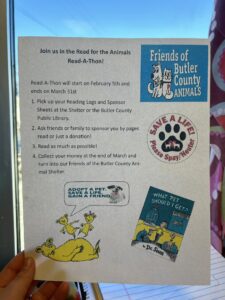 Partner with the local children’s librarian to run a fundraising read-a-thon. The Butler County Animal Shelter in Kentucky partnered with the local library in March to run a
Partner with the local children’s librarian to run a fundraising read-a-thon. The Butler County Animal Shelter in Kentucky partnered with the local library in March to run a 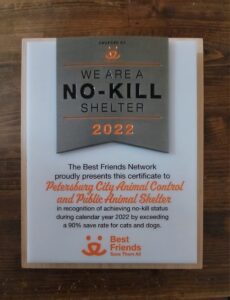 To continue saving lives shelters are forced to constantly fundraise and seek new homes for the animals in their care. It’s important to break up this outreach with good news stories. That includes heartwarming updates on successful adoptions, stories about volunteers and staff, and good news about any achievements of the shelter as a whole. For example, Petersburg Animal Care and Control, VA shared with online supporters that it recently received
To continue saving lives shelters are forced to constantly fundraise and seek new homes for the animals in their care. It’s important to break up this outreach with good news stories. That includes heartwarming updates on successful adoptions, stories about volunteers and staff, and good news about any achievements of the shelter as a whole. For example, Petersburg Animal Care and Control, VA shared with online supporters that it recently received 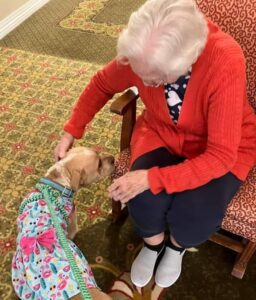 There’s so much research that proves the benefits pets bring to seniors. While residents in most nursing homes and assisted living facilities cannot have an animal companion in their rooms they do enjoy spending time with visiting pets. Every month friendly dogs from the Maury County Animal Services Shelter,TN spread joy to the residents of the Morning Pointe Assisted Living facility in Columbia. Not all nursing homes will allow dog visits but it’s worth reaching out and starting a conversation. Sharing images of dogs interacting with seniors is also a wonderful way of finding loving homes for these sweet pets.
There’s so much research that proves the benefits pets bring to seniors. While residents in most nursing homes and assisted living facilities cannot have an animal companion in their rooms they do enjoy spending time with visiting pets. Every month friendly dogs from the Maury County Animal Services Shelter,TN spread joy to the residents of the Morning Pointe Assisted Living facility in Columbia. Not all nursing homes will allow dog visits but it’s worth reaching out and starting a conversation. Sharing images of dogs interacting with seniors is also a wonderful way of finding loving homes for these sweet pets. Gather donations of food, crates, collars, harnesses, head collars, treats, and anything else you know people might need to keep their pets in their homes rather than surrender them. Ask local businesses to donate these items. When people come in because they are struggling to keep their pet, allow them to ‘shop’ your pantry (or select the items yourself). Businesses like to help and often shelters get donations of food/crates, etc., that they cannot use. Once you have your pantry up and running, consider writing a press release to gain a little attention for the way the shelter is giving back to the community. Consider recruiting volunteer drivers to drop food off to homes of pet owners who cannot get to the pet pantry.
Gather donations of food, crates, collars, harnesses, head collars, treats, and anything else you know people might need to keep their pets in their homes rather than surrender them. Ask local businesses to donate these items. When people come in because they are struggling to keep their pet, allow them to ‘shop’ your pantry (or select the items yourself). Businesses like to help and often shelters get donations of food/crates, etc., that they cannot use. Once you have your pantry up and running, consider writing a press release to gain a little attention for the way the shelter is giving back to the community. Consider recruiting volunteer drivers to drop food off to homes of pet owners who cannot get to the pet pantry. State Farm Insurance Company strives to educate all family members about safety around pets. The company’s coloring book “Fido! Friend or Foe” teaches children how to safely interact with and care for dogs. Shelters can reach out to their local State Farm agents to ask if they have access to the kids coloring books. The company may be willing to donate a number of copies to the shelter or the shelter could partner with State Farm to distribute copies of the books in local schools.
State Farm Insurance Company strives to educate all family members about safety around pets. The company’s coloring book “Fido! Friend or Foe” teaches children how to safely interact with and care for dogs. Shelters can reach out to their local State Farm agents to ask if they have access to the kids coloring books. The company may be willing to donate a number of copies to the shelter or the shelter could partner with State Farm to distribute copies of the books in local schools.